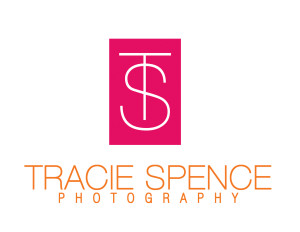 Tracie Spence is an award-winning fine art photographer based in California. She talks to us about her dramatic career changes, the beauty of wild mustangs and why her team collaborates on Hightail.
Tracie Spence is an award-winning fine art photographer based in California. She talks to us about her dramatic career changes, the beauty of wild mustangs and why her team collaborates on Hightail.
I picked up my first camera when I was 27
I used to be a psychotherapist but it wasn’t my true passion. So I took a few photography classes at a community college and soon my teachers were encouraging me to sell my photos. I took a lot of portraits after people saw my pictures of my daughter and asked me to shoot their kids. After my first year doing portraits in 2006, I won two National Fujifilm Awards for Children’s Portraiture, which helped me get magazine commissions. After my first editorial job, I realized I would not do another portrait shoot in my life.
I love advertising
My editorial work led to fashion and commercial shoots and ultimately to working in advertising. I shot major international campaigns and began progressing in the industry quickly. A lot of artists get obsessed with their creativity and for me, my ad work was my obsession. As much as I was trying to put my younger children and husband first, I was most excited about winning pitches.
A traumatic brain injury forced me to slow down
In December 2010, I suffered a traumatic brain injury while skiing and, for several months, lost my vision, personality, empathy and memory. It was a long road back, especially as I kept re-concussing and suffering new cognitive challenges, but I’m now about 80% of where I was. However, doing commercial shoots where I had to manage my team, clients, producers, art directors and the talents was too much for me, so I gracefully backed out of advertising. It was one of the most difficult choices I ever had to make, but ironically, my head injury turned out to be a blessing. It slowed me down and I got to spend more time with my family and started focusing on creating fine art. I don’t know where I’d be if it hadn’t happened.
My first fine art shoot was Wild Mustangs
Wild horses are probably the hardest subject I could have chosen. One time, I was shooting five mustangs with my 300mm telephoto lens and was so caught up in the moment that I didn’t realize that they were running right at me. Later I saw from the photos that one mustang cut off the others – luckily for me. You can see the moment where they all put on the brakes and dirt flies as they try not to collide with each other.
My goal is to capture the mustang’s emotion
What I love about the wild mustangs is that they have such an interesting story. A lot of them are refuge animals and you can see the branding on them so you know they’ve been separated from their herd, relocated and abused. These horses have suffered but remain strong and proud. One reason why ad agencies liked working with me was that I could use my psychology background to help pull out character and emotions to express the story we wanted. I photograph mustangs like people in an ad campaign. I’m always trying to pull out the animal’s energy and emotion and ultimately their story as it evolves in front of me.
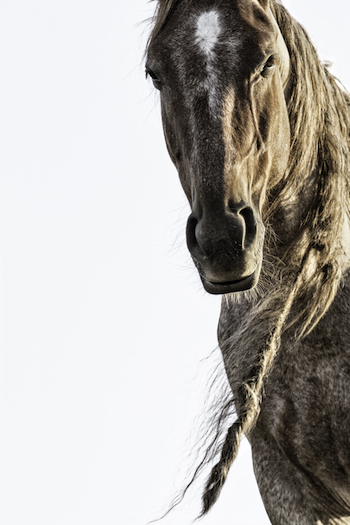 One magical moment makes it all worthwhile
One magical moment makes it all worthwhile
I had been tracking a herd of mustang on foot for more than half a day. Twice, they had been spooked and ran away. Now the sun was setting and I was losing light as I approached them. One of the stallions was obviously protecting the herd because he was standing out and watching me closely, but this time he didn’t tell them to run. I was as close as 20 feet from him and had started shooting with my 200mm when he honored me with this amazing gaze filled with emotion as his dreadlocked mane blew in the wind. That to me was a magical moment, where you can see the horse’s soul in his eyes.
I wasn’t ready for success so early
I released my first Wild Mustang series to a gallery back in May and it’s been really successful. I’ve gotten into more galleries and been published, which led to people calling asking to sell my work or purchase pieces. So I’ve been printing a lot more photographs than I had expected. Previously, I did all the retouching work – like cropping, contrast and saturation – myself but now I have a full-time retoucher, which relieves me of a lot of stress.
I was afraid of using retouchers for my personal work
When I worked in advertising I would happily send the photos to a retoucher and have them work with the agency on the final image. But for my own pictures, I worried that my work would lose the truthfulness of my style and my vision. Then I met Cathy Simone, another wild mustang photographer who also teaches advanced-level Photoshop. We clicked instantly and I knew that she could take my vision and keep it authentic, which allows me to focus my time on shooting rather than sitting behind the computer.
My team now collaborates on Hightail
Cathy and I work very closely with my print lab on my latest gallery orders. I’ll add all the images to a Space so she can download them and upload new versions when she’s retouched them. It makes communication much better and speeds up the process a lot. There’s no confusion of “did you send me this file?” or “is this the right file?” Instead of dealing with a bunch of loose emails, I check the Space and see if Cathy has uploaded a new version, so I can cut out all those emails where I’m asking “did you do this yet?”
Spaces saves us more than an hour per file
Previously, we’d have to look through emails and cross reference what was there with what we already had. With Spaces, everything is just there and you can see each image right away. We were reworking 18 images in a two-week period trying to get them out to galleries before Christmas and using Spaces saved each person on my team around 10 hours. When Cathy first used it she remarked on how easy and intuitive it was. My printer is recommending it to other photographers he works with.
I wish this was around eight years ago
I’m not an organized person. I’m a typical scattered artist and I’d never established one place to do everything. The beauty of Hightail is that it’s self-organizing. I love the whole look and feel. It’s clean and there’s not a lot of visual clutter. I’m visually overstimulated every day so it’s great that Hightail is calming and makes things very simple.
To learn more about Tracie, visit www.traciespence.com. Try Spaces for free at spaces.hightail.com.

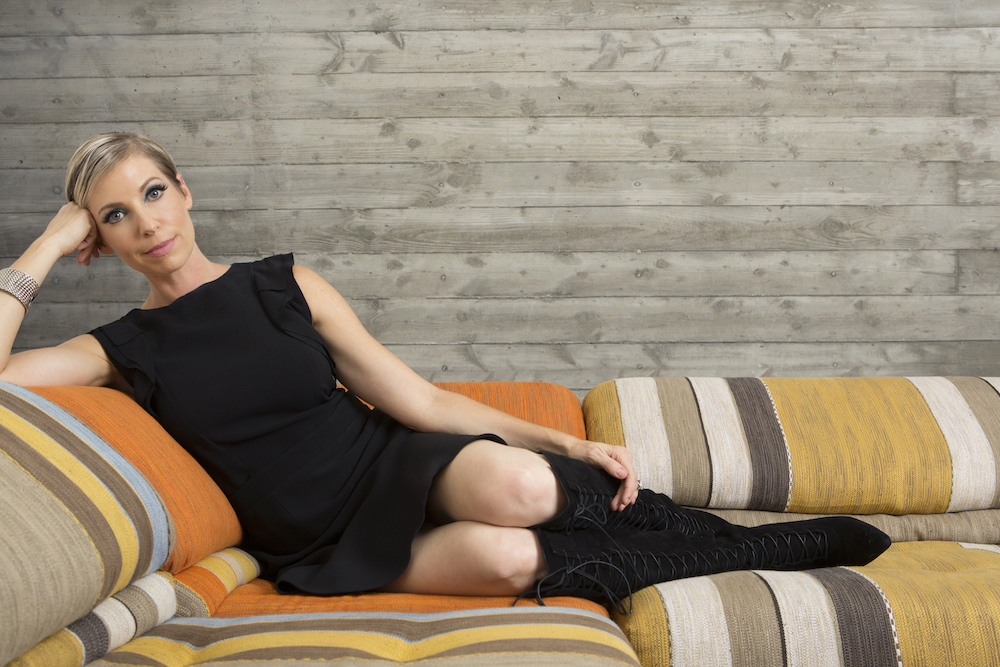
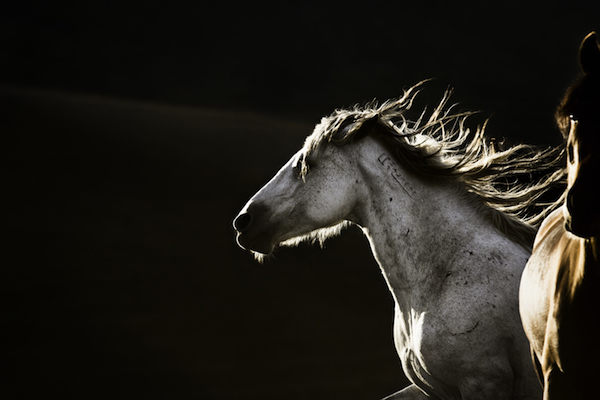
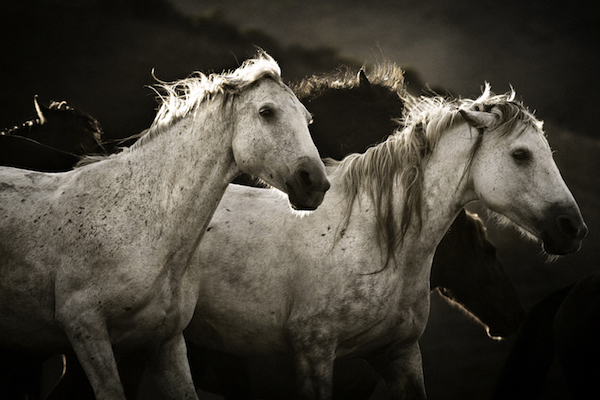
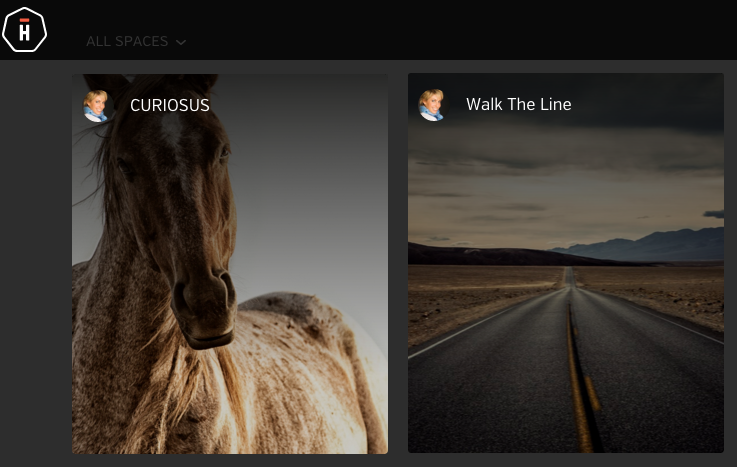
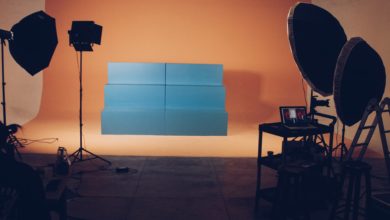
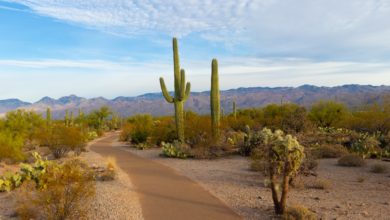


I love horses. Thanks for this great shot or the herd leader!
Thank you hightail! I love horses and absolutely fell in love with the rawness of the image shot by Tracie featured in your newsletter. Read the article and I have to say Tracie Spence you are amazing! Indeed a very inspiring soul. You went through so much and I could only see positivity oozing out of your character! Commendable.
Tracie you are so gifted. I have tried so hard to look for horse pics for my desktop wall paper, but never came across something like this before. This is really what I was looking for. Every picture evokes the horses emotions. It has touched my soul. Feels like I’m closer to my dream of owning a horse one day. Thank you for making my day! Wishing you all the very best in life!
I loved meeting you and Cathy & the others at RTF last summer. So wonderful to see your art and learn about the benefit of having Cathy do editing. A great idea, that I would benefit from too. Laura
Hi – read your notes – interest is mainly in images of horses – text discloses lack of understanding of the nature of wild horses (mustangs in US) – stallions do not protect the herd – stallions have a full time job protecting themselves FROM the herd !! Not wholly unlike human life, the herd is bossed by the dominant female or females – the stallion is kept at a distance and only used when when and as required IF chosen by the ripe female(s) – his main threat is – other stallions. the picture of the stallion speaks to me of a half closed eye and threatening mouth position response which might fit the words “what do YOU think are you doing here ? this is my patch” I suggest read “The secret lives of horses” Scientific American, October 2015.
I suggest photoshopping pushed too far – but real life may not be as stimulating to an urban population wishing for a return to their other selves.
Mike M
putting all of the correctness aside; I love horses and some of your photographs are wonderful. You need to learn about mustangs more – they are a unique and stunning animals. Well done though.